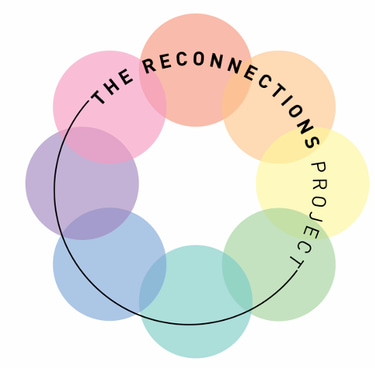How to Make a Successful Survey: Free Guide
Use this tool to make a succinct survey that gets the data you need, while minimising the impact of bias. Check out the downloadable version at the end of the post.
RESOURCES
Dr. Trent Grassian
6/16/20254 min read


Making a 'good' survey may seem straightforward, but there are many key considerations that are often missed.
Common Pitfalls
I have supported dozens of organisations with surveys. Here are the 10 most common issues I have seen:
Not being specific enough on what questions you want to answer.
Not asking the questions that will get you the data you actually need.
Not being clear on who your target population is.
Not thinking critically about what demographic data would (and wouldn't) be useful.
Using lots of open-ended questions (a nightmare to analyse!)
Asking the wrong questions or leaving out something crucial.
Sending out a survey without testing it first.
Not doing enough work to disseminate the survey to a diverse range of people.
Not incentivising people to participate.
Wanting to do far too much with one survey.
Trent's Top Ten Tips for a Successful Survey
There are a lot of nuances to creating an effective survey. Follow these tips and you will be well on your way to creating an effective survey that gives you the data you need:
Be as clear as you can on the questions you want to answer: It is not enough to say that you want to understand the experiences of people experiencing homelessness, for instance. You need to specify exactly what you want to know: Is it about barriers to accessing temporary accommodation? Identifying what barriers are most common or having a deeper understanding of a few barriers? Whether they have engaged with a certain type of service or experiences with those services? Be specific!
Think about the data you need before designing the survey: Once you have the questions you are answering in mind, write out exact phrases using pretend data to figure out how your questions need to be worded. There are infinite ways to ask even simple questions (e.g., What is your ethnicity?) and the way you word the question and frame the answers determines what you can report. It is very easy to ask a question in a way that makes data unusable.
Specify the population you are studying as much as possible: Who exactly do you want to take your survey? Is it all people who identify as LGBTQIA+? Does this include people who identify as cisgender but are questioning their sexuality? What about people who live in a different country from the one you're working in? People under 18? Again, be specific!
Consider demographics: This is important for two reasons. Firstly, when sending out the survey, consider how you will share it and with whom. As a general rule of thumb, you want your respondents to reflect your target population. That means that if 9% of asylum-seeking people in the UK are Afghans, you want your survey of asylum seekers to include about 9% Afghans. However, if you want to focus on specific groups, particularly if that group is a small proportion of the larger population you are targeting, you may want a disproportionately higher number of them to respond. E.g., if you want to survey people working in the charity sector, but want to make sure you hear from plenty of CEOs (a small proportion of all charity staff), you will need to take extra steps to specifically target CEOs.
Secondly, consider the demographic questions you will ask. Include some demographic questions – What if your programme is having a bigger impact on a certain group? Or, your survey responses are overwhelmingly male? You need to know these things!, but you don't want to ask unnecessary questions. Be succinct but targeted with your questions.Minimise open-ended questions: While it is great to add qualitative data (i.e., people's opinions, descriptions, and experiences) to add further depth to any quantitative (i.e., numeric) findings, analysing open-ended questions takes exponentially longer. You should only have a few open-ended questions (at most) that you are confident you need and already have an idea of how you will analyse them.
If possible, end your survey with "Is there anything else you'd like to add?" (or similar): I know I said minimise open-ended questions, but you don't know what you don't know, and trends that come up in this question can give you new and interesting insights. If there's space, it's a great question to include.
Pilot your survey before sending it out: Make sure you have at least 10 people try the survey before you send it out. This should ideally be a diverse group of people from your target population (i.e., those you want to take the survey). Otherwise, you risk sending out questions that are misinterpreted. This is also a chance to check that your survey is getting you the right data.
Send at least 1-2 reminders: People are busy, and people forget things. Ideally, send reminders at different times on different days of the week, to increase your chances of catching people at the 'right' time.
Give an incentive: There are a lot of surveys out there. A lot of videos to watch, blogs to read... Give people a reason to complete your survey. Research suggests that the bigger the reward, the more responses you will get (though this effect reduces as the prize reduces), so I usually suggest one big reward that a random participant will receive.
Those working for the public good need to demonstrate that we value people's expertise and reward them accordingly. While some surveys seek respondents in a professional capacity (meaning that they are already being paid for their time), other surveys target people with 'lived experience'. For the latter, we should ideally compensate all respondents.Be as succinct as possible: If you only follow one of these tips, make it this one. A survey should never take more than 5-10 minutes (if you can help it). Ideally, the average person should take 5 minutes or less. I usually aim for between 2-4 minutes. You will get far more responses the shorter your survey is, and having a high number of responses is one of the best ways to have impactful data that you can have a high level of confidence in.
Free downloadable guide
Download my free guide below and keep it handy. It includes lots of examples and a glossary of terms, to help you feel confident the next time you're thinking about making a survey!
If you need this information in a Word document format, please email me.
Get in touch if you'd like to get some support in your survey endeavours. Don't forget, I offer a FREE 45-minute consultation to anyone working for the public good.
No budget? No problem. If you're committed to making an impact, I want to help you do it better. This isn't just work—it's a mission. Let's make change happen, together.
